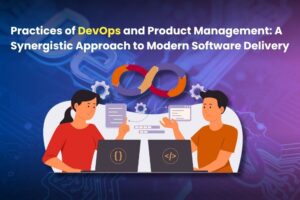Salesforce DevOps is a rapidly evolving discipline that integrates the principles of development and operations to streamline application delivery, ensure high-quality releases, and enhance collaboration among teams. With 2025 poised to bring more automation, security, and scalability into the Salesforce ecosystem, adopting modern DevOps practices is essential for businesses aiming for agility and efficiency.
This guide provides an in-depth exploration of Salesforce DevOps, covering its core components, benefits, tools, and best practices for 2025.
What does Salesforce’s DevOps mean?
In Salesforce, DevOps is the practice of combining IT operations and software development teams to create, test, and launch apps and services more quickly and consistently. DevOps’ primary objective is to streamline the development process so that code modifications may be made fast without sacrificing stability or quality. It seeks to reduce the time between creating programming and providing clients with value.
Automating tedious chores, facilitating continuous integration and code delivery, putting thorough testing into practice, keeping an eye on production apps, and encouraging cooperation between the development and operations teams are all important components of DevOps in Salesforce. When combined, these procedures let companies roll out upgrades more often. They are also essential for early problem detection and continuous performance, dependability, and user experience improvements.
Level up your skills with expert-led DevOps training in Pune—enroll now and stay ahead!
Understanding Salesforce DevOps
A collection of techniques, resources, and cultural norms known as Salesforce DevOps improves the effectiveness of Salesforce development and deployment. To guarantee seamless and error-free releases, it places a strong emphasis on automation, teamwork, and continual development.
Key principles include:
- Continuous Integration (CI): Automating code integration from multiple developers to detect and fix conflicts early.
- Continuous Delivery (CD): Making certain that code modifications are automatically checked and smoothly rolled out to production.
- Version Control: Using Git-based repositories to track changes, roll back errors, and maintain a development history.
- Testing Automation: Implementing automated testing frameworks to validate code quality and functionality before deployment.
- Security and Compliance: Integrating compliance verifications and security checks into the development process.
Benefits of Salesforce DevOps
Embracing DevOps in the Salesforce ecosystem offers numerous advantages:
- Faster Deployment Cycles: Automating builds, tests, and releases reduces the time required to deploy changes.
- Enhanced Cooperation: When teams adopt a common development and deployment methodology, they collaborate more effectively.
- Better Code Quality: Continuous testing and monitoring prevent defects from reaching production.
- Greater Security and Compliance: Automated compliance checks and security protocols enhance system integrity.
- Flexibility and scalability: Give companies the capacity to manage expansion and changes more skillfully.
Transform your career with hands-on DevOps training in Pune
Top Salesforce DevOps Tools
1. Copado
Description: A leading Salesforce DevOps platform offering CI/CD, version control, and automated deployments.
Key Features:
- End-to-end release management
- AI-driven insights
- Automated compliance checks
- Git-based version control
Best For: Enterprises needing robust compliance and security.
2. Gearset
Description: A user-friendly DevOps tool that simplifies deployments and rollback mechanisms.
Key Features:
- Smart change tracking
- Automated testing and rollback
- Integration with Git, Bitbucket, and Azure DevOps
- Deployment validation
Best For: Teams looking for an intuitive, flexible DevOps solution.
3. AutoRABBIT
Description: A powerful DevOps tool that automates Salesforce release management and security.
Key Features:
- Full CI/CD automation
- Static code analysis
- Data recovery and backup
- Enhanced security adherence
Ideal for: Big businesses with intricate security requirements.
4. Flotsam
Description: A native Salesforce DevOps solution focusing on security and compliance.
Key Features:
- Completely Salesforce-native design;
- Integrated version control
- Continuous integration and testing
- No external servers required
Best For: Organizations that need a fully Salesforce-native solution.
5. Blue Canvas
Description: A DevOps tool specifically designed for Salesforce developers.
Key Features:
- Git-based version control
- Real-time code synchronization
- Automated deployment pipeline
- Easy rollback functionality
Best For: Development teams looking for Git-based DevOps processes.
Choosing the Right Salesforce DevOps Tool
When selecting a Salesforce DevOps tool, consider the following:
- Team Size: Small teams may prefer user-friendly solutions like Gearset, while large enterprises might require Copado or AutoRABIT.
- Compliance Needs: If security and compliance are top priorities, Flosum or Copado would be ideal.
- Integration Capabilities: Verify that the tool is compatible with the version control and CI/CD systems currently in use.
- Usability: Select a tool based on the workflow and skill level of your team.
Salesforce DevOps tools help streamline development, improve collaboration, and enhance security. Whether you’re a small team looking for simple deployments or a large enterprise needing advanced compliance, there is a DevOps solution tailored to your needs.
Best Practices for Salesforce DevOps in 2025
To maximize the benefits of DevOps in Salesforce, organizations should adhere to the following best practices:
1. Implement a Strong Version Control Strategy
- Use Git branches effectively for feature development, hotfixes, and releases.
- Regularly merge and review code to prevent integration issues.
2. Automate the Processes of Build and Deployment
- CI/CD pipelines should be set up for automated deployments.
- Utilize metadata API, Salesforce CLI, and source tracking for seamless deployments.
3. Leverage Automated Testing
- Implement unit tests, functional tests, and regression tests.
- Continuously test all changes before deployment.
4. Preserve Security and Conformity Guidelines
- Secure checks should be incorporated into the CI/CD workflow.
- Conduct regular audits and vulnerability assessments.
5. Foster Collaboration and Transparency
- Encourage communication between developers, admins, and business teams.
- To monitor progress, use teamwork platforms like Jira, Microsoft Teams, and Slack.
6. Track and Enhance Performance
- Put in place real-time error and performance monitoring.
- Use Salesforce logging and analytics tools to track system health.
Challenges in Salesforce DevOps and How to Overcome Them
Despite its benefits, Salesforce DevOps presents some challenges that organizations must navigate:
- Complex Metadata Management
Solution: Use source-tracking tools like Copado and Gearset to manage metadata effectively.
- Security Concerns
Solution: Automate security scans and use Salesforce Shield for data protection.
- Integration Issues
Solution: Implement API-based integrations and test them before deployment.
- Resistance to Change
Solution: Train people on DevOps best practices and cultivate a culture of learning.
Future Trends in Salesforce DevOps for 2025
Salesforce DevOps is continuously evolving. Key trends expected in 2025 include:
- AI-Driven DevOps: AI-powered automation will enhance testing, deployment, and monitoring.
- Low-Code/No-Code Development: Increasing adoption of tools that empower non-developers to participate in DevOps.
- Improved Security Automation: Additional technologies to automate vulnerability screening and security compliance will be developed.
- Better interaction with cloud services: For increased scalability, there is a smooth interaction with AWS, Azure, and Google Cloud.
Conclusion
Salesforce DevOps is essential for organizations aiming for agility, efficiency, and security in their development lifecycle. Businesses can optimize their Salesforce investment and guarantee ongoing innovation by putting best practices into effect, utilizing the appropriate tools, and staying ahead of trends. As 2025 approaches, embracing modern DevOps methodologies will be a key driver of success in the Salesforce ecosystem.






